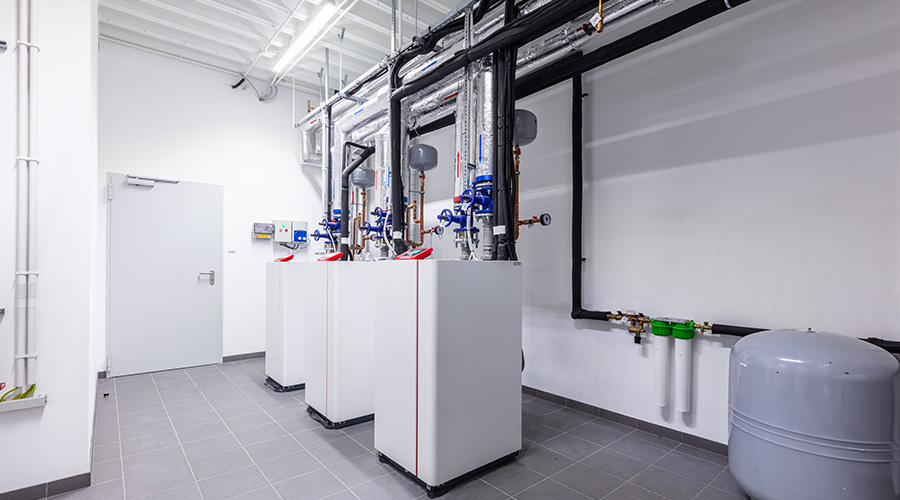5 Smart Building Strategies for High-Performance
The building internet of things brings about new capabilities, but make sure smart buildings aren't a solution for a problem that doesn't exist. Match strategies with organizational needs.
Like many IoT applications, smart buildings can be a solution looking for a problem, so it is vital to articulate the intent and description of the desired functionality so that the system functionality reflects a building or organization’s overall goals. The following are five suggested sustainability-related categories and details recommended for inclusion.
1. Energy management and submetering. To enable holistic energy management with the ability to allocate energy usage and cost to specific spaces, buildings should establish energy management or monitoring and verification (M&V) plans based on predictive indicators, finer spatial resolution, and higher frequency. This will allow regular (e.g., weekly) or automated energy analysis based on predictive results that incorporate outdoor temperature, occupancy, or operating schedule. This can also be used for tenant engagement, green leasing and tenant billing, tenant greenhouse gas and energy use reporting, and greater tenant accountability. The following are a few general system requirements:
• Energy should be monitored at a minimum of 15-minute intervals.
• Facility power and power quality should be monitored at a minimum of one-minute intervals.
• Submetering should take place at a floor level (or other space type segregation) and by end use (e.g., HVAC, lighting, plug loads).
• Data should be routed to a third-party platform that can integrate other data feeds (e.g., occupancy), and enable analytics and problem solving. Platforms should include the ability to customize the analytics and reports to better understand building performance.
• Energy and power consumption should also be available to tenants as a dashboard (through a web portal) and as raw data (through an application programming interface or API).
2. Monitoring-based commissioning. Energy management can be significantly enhanced via the integration of monitoring-based commissioning. Monitoring-based commissioning provides building operators with the tools to monitor and manage HVAC equipment performance, proactively identify and address equipment faults, and prioritize maintenance. And because HVAC performance is directly related to energy consumption, peak demand, and indoor air quality, it becomes an essential tool in high-performance building management. Monitoring-based commissioning plans should include:
• Data points associated with HVAC equipment, which should be monitored using change of value limits appropriate for each use case (such as temperature or damper position) to reduce unnecessary network traffic.
• A third-party system that can store data, perform analytics, and accommodate custom rules written to identify and report incorrect sequences of operations or HVAC system faults for all mechanical equipment, as well as a system to prioritize faults to be addressed (such as associated costs or indoor air quality impact).
• Correlation of peak demand and energy charges with mechanical system sequencing.
3. IAQ monitoring. Air quality is the foundation of a healthy building. To assure building occupants aren’t exposed to unhealthy pollutants, are provided with an environment that is conducive to their health, and are able to be highly functional and effective in their work, buildings should include:
• Continuous monitoring of pollutants and comfort indicators, including total volatile organic compounds, carbon dioxide, carbon monoxide, PM2.5, PM10, temperature, and relative humidity. (PM2.5 and PM10 refer to airborne particulate matter that is less than 10 or 2.5 micrometers in diameter that can be drawn deep into the lungs.)
• IAQ parameters (total volatile organic compounds, carbon dioxide, carbon monoxide, PM2.5, PM10) that are maintained below acceptable exposure limits.
• IAQ data that is available to all occupants as a dashboard (through a web portal) and as raw data (through an API).
• A way for occupants to provide feedback on comfort to facility management via third party apps (e.g., Comfy).
• An operations team to monitor comfort feedback and provide more dynamic and flexible zone set points based on democratic majority.
• Reference and potential certification to the RESET standard (a sensor-based and performance-driven building standard and certification program focused on human health).
This list can easily be expanded to include other environmental quality data, such as space-level acoustics and light levels.
4. Space management. To provide developers and tenants with an increased understanding of how space is used and who specifically is using spaces, supporting real-estate planning and management, agile working environments, and developer chargeback for tenant use of shared spaces, buildings should include:
• Occupancy sensors installed at finer spatial resolutions than 500 square feet per sensor or at individual desks.
• Anonymous people-counting systems installed in rooms.
• RFID or digital access controls systems to shared/reservable spaces.
Understanding space utilization also allows for an evolved understanding of building energy use beyond EUI and towards occupancy-based metrics (e.g., energy use per effective occupancy), which would motivate not just making spaces more energy efficient, but also making them more spatially efficient.
5. Deploying Building Internet of Things systems. Most IoT solutions consist of three to four elements: sensors to collect data, a gateway to communicate with these sensors, potentially an on-premise server to consolidate information from all the gateways, and a cloud-hosted server that syncs with the gateways or on-premise server for data storage and analysis. Coordination with IT departments is required to identify and eliminate potential security risks. Some IoT solutions will have BACnet, Modbus, or similar integration capabilities through their on-premise gateway or server, allowing for typical integration of these solutions into a centralized on-premise BMS or data analysis platform.
Once commissioned, users can log in to a central web portal or mobile application to view pre-built dashboards (or use a separate third-party dashboard product that can input the data and use a separate third-party dashboard product for custom data visualization and engagement) and metrics provided as part of the vendor solution.
Raw data from these systems is often made available externally from the vendor cloud server through RESTful web services, allowing for web-style integrations and the development of custom, third-party applications. These integrations must often be custom built, since there is currently no standardization of backend data models or APIs between vendors.
The fact that the sensors, data storage and analytics platforms, and communication protocols have evolved as much as they have to create customizable and off-the-shelf solutions, is still relatively unknown in the building design and operations space. The conditions are right for an explosion in the areas of both ongoing measurement and verification and monitoring-based commissioning, along with the prevalence of air-quality monitoring and management and the integration of occupancy data. This will all support not only improved energy and indoor environmental performance, but will also drive better space utilization, improved collaboration, and improved use and value of the building asset.
Joshua Radoff (joshua.radoff@wsp.com) is senior vice president, built ecology team lead, WSP. Cory Mosiman (cory.mosiman@wsp.com) is a smart buildings specialist with the firm.
Related Topics:













